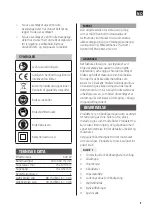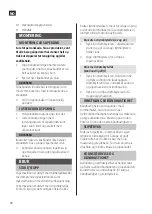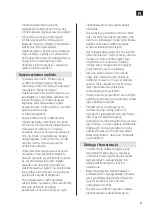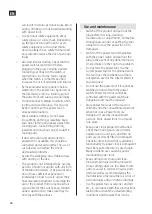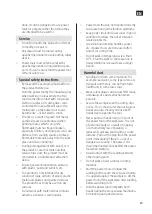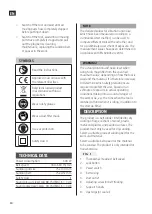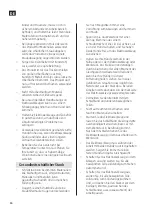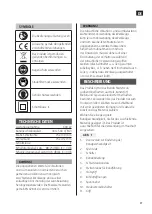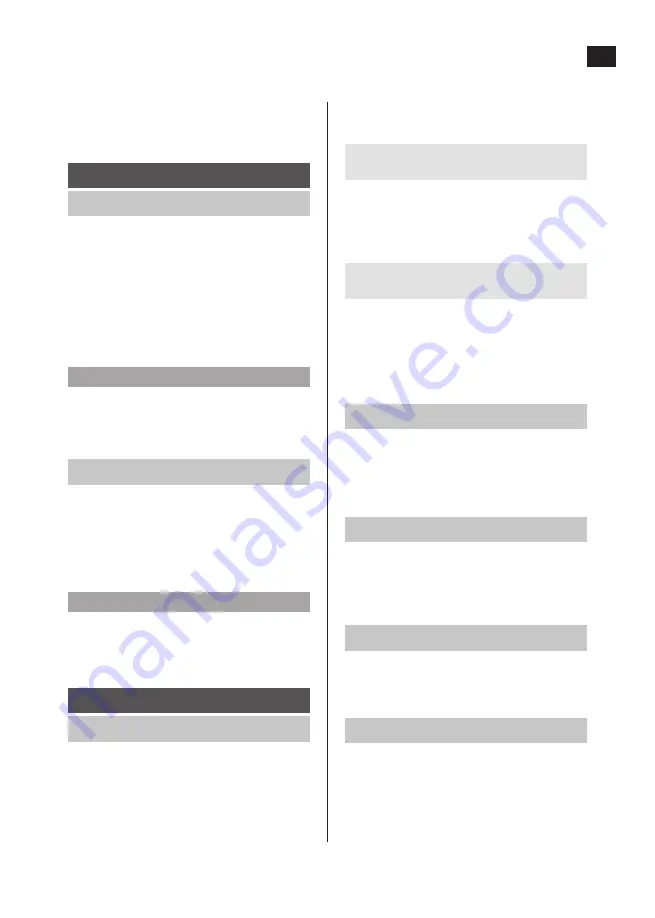
EN
31
9. Clamping lever
10. Dust collection box
11. Handle
ASSEMBLY
FITTING SANDING BELT
Risk of personal injury. Switch off the
product, wait until all moving parts have
completely stopped and pull out the plug
before cleaning and/or maintenance.
1. Release the belt tension by pushing out
the lever all the way. The sanding belt can
be removed when the tension is released.
2. Put the new sanding belt in place.
IMPORTANT:
On the inside of the belt there are arrows to
match the arrows on the product casing.
3. Return the tensioning lever to its home
position.
ADJUSTING THE BELT
1. Hold the product upside down and switch
it on.
2. Adjust the belt with the adjuster screw
so that the edge of the belt runs edge
to edge and parallel to the edge of the
sanding pad.
IMPORTANT:
Make sure that the belt does not touch the
product casing.
3. Check the belt at regular intervals and
adjust with the screw when necessary
USE
STARTING/STOPPING
The sander has a full-wave rectifier with control
electronics and soft start functionality with
starting current limiting device.
The sander has a power switch lock. It is often
not necessary to use the power switch lock, but
for prolonged sanding it is convenient to lock
the power switch for continuous sanding.
Without power switch lock (intermittent
sanding)
1. Press the power switch – the sander starts
and runs as long as the switch is pressed.
2. Release the power switch to stop the
sander.
With power switch lock (continuous
sanding)
1. Press the power switch and press the lock
button at the same time – the power
switch is locked in place and the sander
runs continuously.
2. Press and release the power switch to stop
the sander.
ADJUSTING BELT SPEED
The belt speed can be adjusted with the
thumbwheel, even when sanding.
The optimum belt speed depends on the
material and the type of workpiece. Find the
best belt speed by trial and error.
SANDING PRESSURE
Apply slight pressure – the weight of the sander
is enough to achieve good sanding. By not
applying pressure and allowing the machine to
do the job, you achieve better surface fineness
and the sanding belt also lasts longer.
GRADE AND BELT SPEED
Sanding and surface fineness mainly depend
on the belt speed and grade of sandpaper
(see instructions for choice of band speed and
grade).
SANDING
• Do not use the same sanding belts for
wood and metal.
• Sanding belts that are worn, scratched
or otherwise damaged can damage the
workpiece. Replace sanding belts in time.

